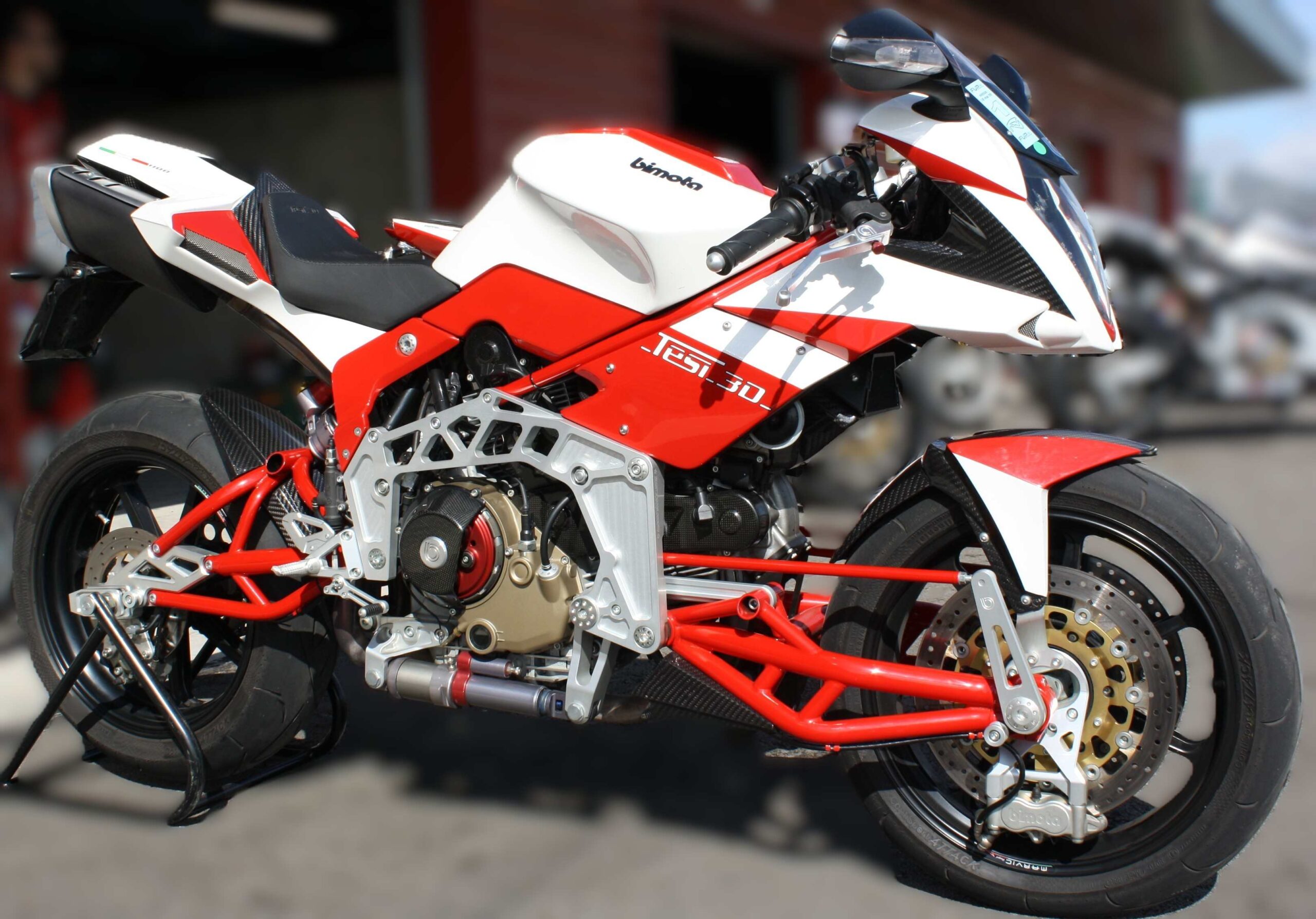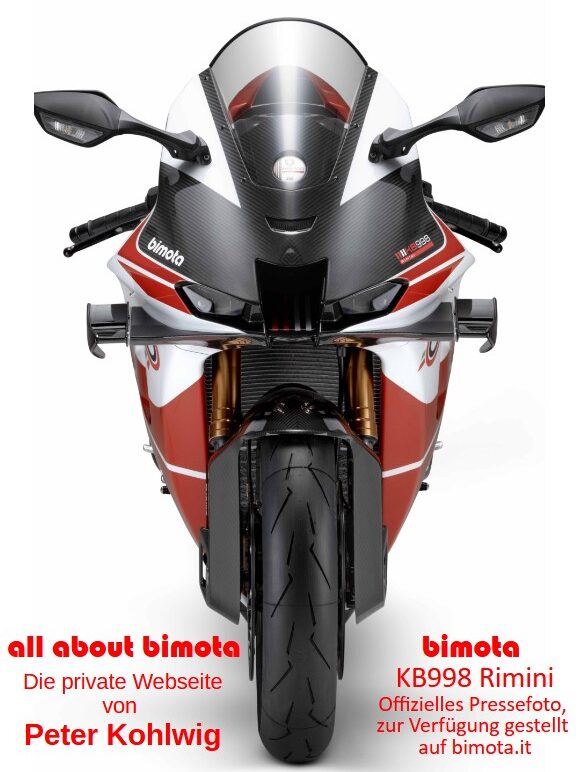
Quelle: https://commons.wikimedia.org/wiki/File:Bimota_Tesi_3D_factory.jpg
Lizenzierung der Datei unter den Bedingungen von CC-BY-SA-3.0
| Designer | Enrico Borghesan | First presentation | Milan 2006 |
| Production period | 2007 – 2014 | Production number | 155 thereof 32 Evo |
| Power | 72 KW (98PS) | Displacement | 1.078 ccm |
| Topspeed | km/h | Weight | wet 188 kg dry 168 kg |
| Price | 29.990 Euro (2008) | Colours | red / white carbon |
| Technical basis | Ducati 1100 DS | Hypermotard |
In 2005, Andrea Acquaviva joined Bimota as the new Head of Development. However, the newcomer was an old acquaintance, having previously worked with Pierluigi Marconi on the Tesi 1D. Under his leadership, the Tesi 3D was developed and presented in 2006 – a modern and technically improved version of Bimota’s hub-center-steered motorcycles.
The fundamental design remained unchanged, featuring two aluminum Omega frame plates bolted to the sides of the engine and front and rear swingarms, each supported by a central shock absorber. However, compared to the Tesi 1D, the frame plates were made more delicate while still accommodating both swingarms as well as the front and rear subframes. Unlike the Tesi 1D’s extruded aluminum profiles, the swingarms were now welded from steel tubes, similar to those of the DB5 and DB6.
The design of the front swingarm allowed for a greater steering angle. The front shock absorber was positioned horizontally on the right side, beneath the engine, and connected to the swingarm via a linkage system. The hub steering mechanism was simplified with fewer linkages, making it significantly more direct and entirely located on the left side.
A first prototype riding report published in the German Motorrad magazine, issue 13/2007, highlighted the new design:
„Amazing how the delicate and intricate wheel suspensions contrast with the dynamically designed main body of the machine. Without a doubt, the new Tesi is the most beautiful one yet. It confidently showcases its unique construction. And thanks to the air-cooled 1100cc Ducati V2 engine that powers the bike, it is extremely slim. No comparison to the rather chubby designs of the past“
The same report also described the Tesi 3D’s unique riding characteristics, which set it apart from conventional telescopic forks due to its front double-swingarm suspension:
„A major advantage of the Tesi: When braking, the suspension responds extremely sensitively, providing immense grip on the front wheel even over severe bumps.
Downside: There is a lack of feedback. Road bumps are beautifully ironed out, even in a lean. What motorcyclists have trained themselves to do over hundreds of thousands of kilometers—paying attention to and compensating for the smallest vibrations in a lean—suddenly becomes unnecessary. The Tesi’s front wheel feels completely decoupled, whether riding straight or at a sharp lean angle.
It takes some getting used to, but with enough faith, one eventually learns that if a wheel starts to slip on the Tesi 3D, it’s always the rear one first.“
The Tesi’s engine was the familiar air-cooled two-valve, twin-spark Ducati engine from the 1100cc DB5 and DB6 models. Thanks to modifications by Bimota—including an optimized air intake system, exhaust system, and refined ECU mapping—it delivered 90 hp.
At its unveiling at the EICMA in Milan, the Tesi 3D was presented in a white and red livery with gold stripes—the color scheme of the legendary YB4, with which Virginio Ferrari won the 1987 TT F1 World Championship for Bimota. However, the gold stripes were dropped before the production launch. Initially, the Tesi 3D was offered only in red and white or in an unpainted carbon fiber look.
At the 2012 EICMA in Milan, Bimota unveiled three new Tesi models: the Tesi 3D Evo, the Tesi 3D Naked, and the two-seater variant, the Tesi 3D Biposto. All three models received the Evo upgrades. The key technical improvement in the Evo models was the repositioning of the front shock absorber: instead of being placed under the engine and connected via a linkage, it was now directly bolted to the right swingarm and the right frame plate.

